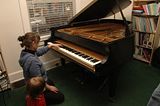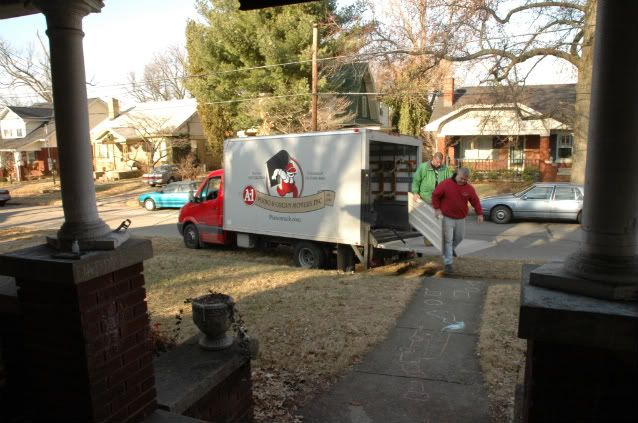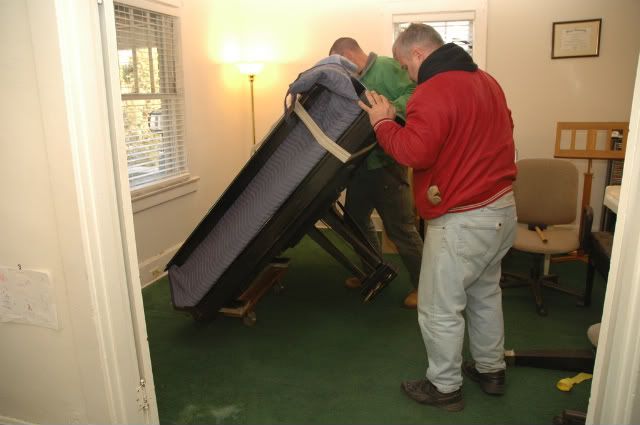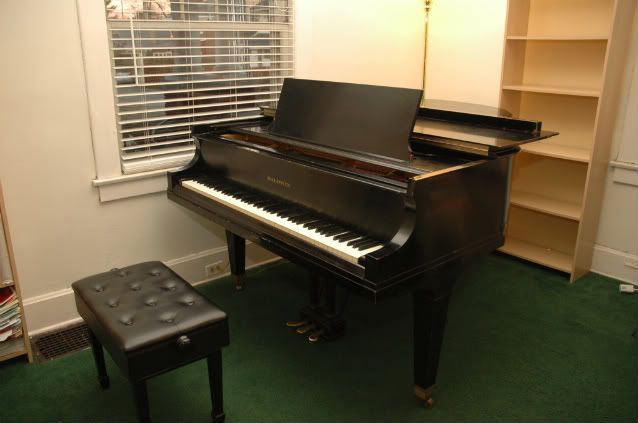It is amazing to hear what a difference correct placement of the action within the piano case can make. There is quite a bit of leeway left to right, and the right-hand end block can be adjusted to hold the action in the correct spot. We found that by moving the action over slightly, the sound was really improved across the whole gamut.
The polished capstans and cleaned key pins made a noticeable difference in the piano's touch, and the shaved hammers resulted in a beautiful tone -- as far as 40-year-old strings will allow, of course! New strings will have to wait a few years.
Here are some photographs with explanations. Click on a picture to view it in full resolution. Enjoy!
We carried the piano action into the dining room and set it up on the table. The workspace was just right. In this picture, Sally was polishing capstan surfaces to remove burrs.

See how shiny those brass capstans look after they are polished? The action feels so much faster now.
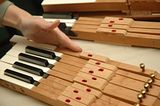
These keys were waiting on deck for their "spa treatment."
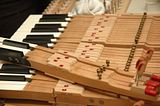
The back ends of the keys, with the red felt backstops that "catch" the hammers.
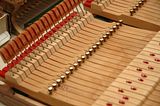
Hammer felts after they've been shaved... look closely at the penciled-in numbers.
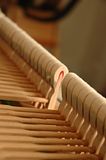
More keys to clean...
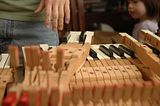
The piano looks very odd without its "teeth."

Here we are cleaning the key pins. We also put a small amount of lubricant on each pin to further reduce friction in the keys.
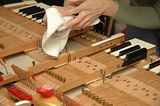
Here I am cleaning pins (nice part, Adrienne).
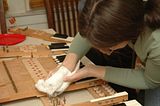
We carefully vacuumed the felt and the entire area surrounding the keys.
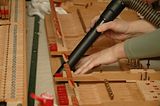
We replaced keys as we cleaned, checking the numbers engraved in the wood, and penciling them in so they would be easier to read. Each key is at a slightly different angle, so it is crucial to put them back in the correct order.

Here, Sally is reattaching the hammer mechanism to the key action. I was not really being very helpful, but she had everything under control.
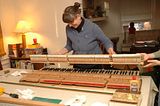
The action fully reassembled and ready to place back into the piano case.
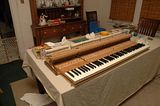
More freshly shaved hammer felts.
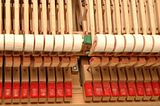
Sally checks the placement of the action and makes several small adjustments before replacing the keyslip, fallboard, and end blocks.
